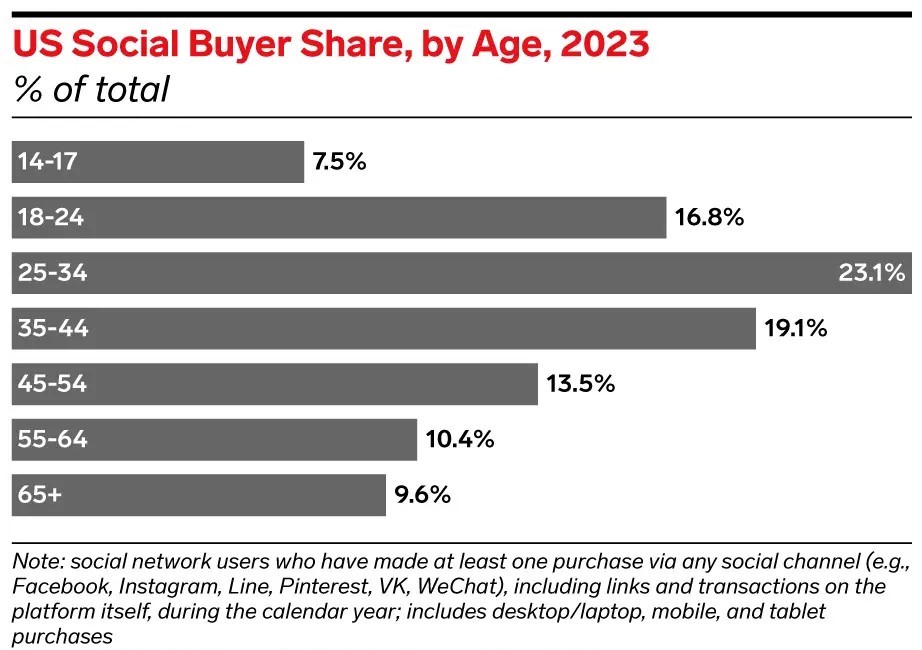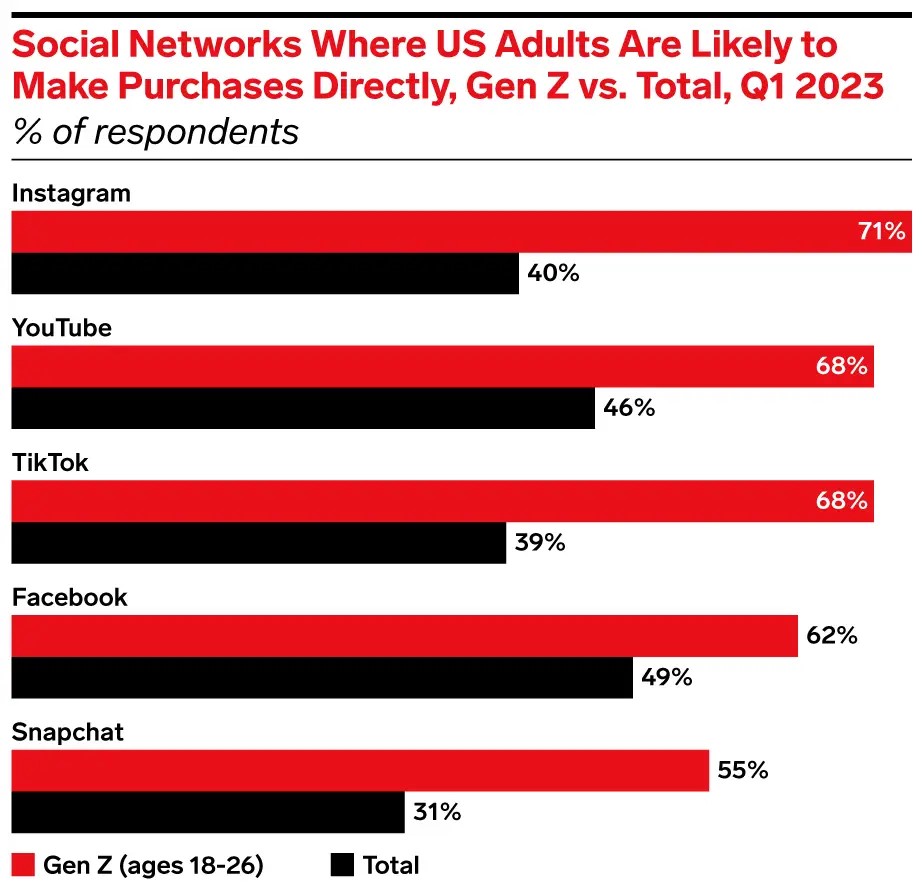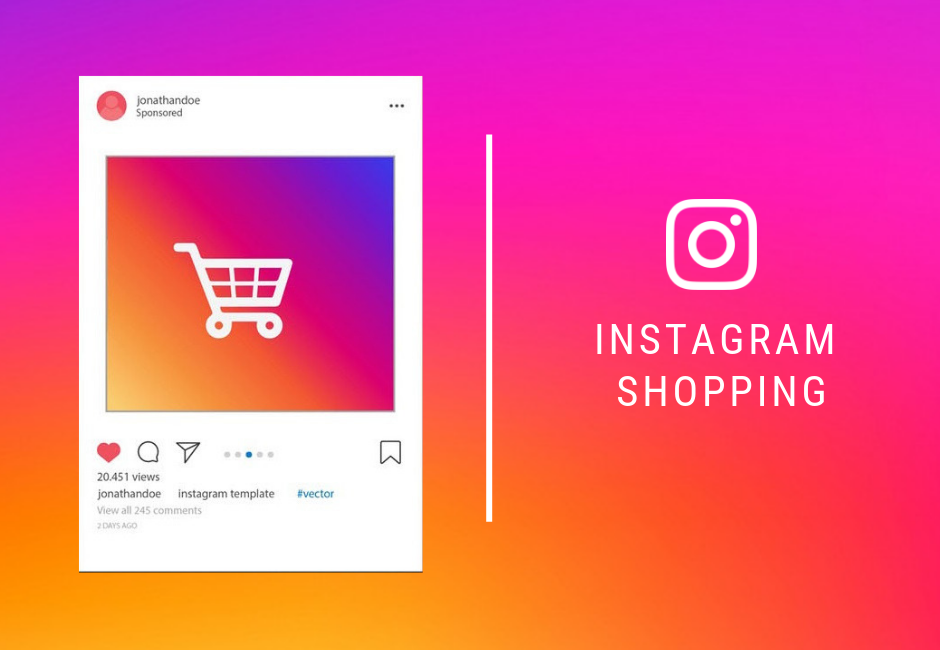Blending shopping and social media isn’t just a fad; it reflects how people shop today. Social commerce grows because many folks spend lots of time on social media.
According to EMARKETER’s forecast from June 2023, adults in the US will use about 11.4% of their day on social media and nearly 17.9% of their online time by 2024.
With social commerce, whenever you’re on platforms like TikTok, Facebook, or Instagram, you could be making money without switching to a different site.
In this guide, we’ll look at how social commerce is doing and focus on the top platforms. This way, sellers and advertisers can take advantage of this new online shopping method.
In a nutshell 💡:
We checked out more than a million email marketing campaigns from the US, UK, Australia, and Canada. Here’s the lowdown:
- What’s the popular day for hitting the send button?
Most email marketers like for Tuesday, Wednesday, and Thursday.
2. Which day gets the most people opening their emails?
Thursday wins the prize for the highest open rate, with Monday not far behind.
3. When during the day do people open emails the most?
The hot times are between 9AM-12PM, and another spike between 12PM-3PM.
The Evolution of Social Commerce
Social commerce has come a long way since its inception. Initially, social media platforms were primarily used for connecting with friends and sharing updates. However, as e-commerce gained popularity, businesses saw an opportunity to tap into the vast user base of social media platforms. Thus, the concept of social commerce was born.
Social commerce has changed as social media became more popular. At first, social media was just for showing off brands and chatting, but then it started being used for buying and selling things. Now, you can see buttons like “Buy Now” and posts that you can shop from, with easy ways to pay right there. This means anyone can sell stuff using social media, no matter how big or small their business is. Social commerce is a big deal now!

The Early Days of Social Commerce
Social commerce is like a giant online yard sale, where people browse, chat, and buy things all in one place. But just like any yard sale, it took some time to get going. In the beginning, businesses mostly relied on two things to sell stuff:
- Regular social media posts: Imagine showing off your products at a yard sale by just shouting about them. That’s kind of what early social commerce was like. Businesses would post pictures and descriptions of their products, hoping people would see them and buy them.
- Word-of-mouth marketing: This is like having your friends yell about your yard sale to everyone they know. In social commerce, this meant happy customers telling their friends and followers about the great products they found.
While these early methods worked a little bit, they weren’t perfect. Here’s why:
- Not everyone sees your posts: At a yard sale, people have to walk by your stuff to see it. On social media, there’s a lot of competition, so your posts might get lost in the shuffle.
- Reaching the right people is tough: Imagine if only people who liked lemonade showed up at your yard sale. That’s not ideal if you’re also selling cookies! Early social commerce didn’t have the tools to target specific groups of people who might be interested in your products.
Because of this, many businesses found it hard to make a lot of money through social commerce at first. But that doesn’t mean it wasn’t a good idea! The idea of selling things directly on social media had a lot of potential, it just needed some improvements.
Nowadays, social commerce has come a long way. Instead of just hoping people see their posts, businesses can use special tools to reach the exact people who might want to buy their stuff. This makes selling on social media much easier and more effective. Social commerce is way more powerful now!
Who shops on social media?
Social commerce isn’t just for young people anymore. Older folks are getting into it too because social media sites are getting easier to use.
About one-fourth (23.1%) of people who buy stuff on social media in the US are between 25 and 34 years old, according to a forecast from September 2023 by EMARKETER. And most of them (66.5%) are under 44 years old.
Young people in the US, ages 18 to 34, buy things from Instagram (28%), Facebook (26%), and TikTok (22%), according to a survey from October 2023 by Bizrate Insights.
In 2023, more than half (53%) of people in the US who are 18 to 29 years old planned to shop on TikTok for the holidays, compared to only 36% of all adults, according to data from ESW in September 2023. Lots of people who like following famous people and seeing what they recommend also buy things on social media.
A third (33%) of Gen Zers bought something from a brand that a famous person started in the last year, according to a survey from November 2023 by Morning Consult.
Gen Z is more likely than any other age group to buy something after seeing a review from someone famous they follow, according to data from Deloitte in November 2022.

Most Popular Social Commerce Platforms
Big social media sites have changed a lot, making it easy to buy things right where you chat with your friends. These sites aren’t just for talking anymore—they’re like fancy online stores too!

Facebook Marketplace

Facebook is the top place for social shopping, with the most people buying things expected to hit 64.6 million in 2024, according to a forecast from September 2023 by EMARKETER. Lots of people use Facebook, so it’s a great way for brands to sell to all kinds of people from all over the world. Plus, Facebook has lots of cool features for setting up online stores and figuring out what customers like.
Facebook Marketplace is a special part of Facebook just for buying and selling used stuff. While businesses can sell things there and put up ads, it’s mostly about regular folks selling things in their local area. This Marketplace is a big reason why Facebook is so good for social shopping. If you don’t count Marketplace in the data, Instagram would have the most people buying stuff on social media, according to research mentioned in EMARKETER’s Social Commerce Forecast 2023 report.
Facebook Shops

Facebook Shops is different from Facebook Marketplace because it’s for businesses to create their online stores. People can browse and buy things right on Facebook without having to go anywhere else.
With Facebook Shops, businesses can show off their products in a nicer way, with more pictures and information. They can even highlight special items, seasonal collections, and deals to make the shopping experience more fun and interesting for customers.
Instagram Shop

In 2024, Instagram is expected to have around 46.8 million people in the US who buy things on social media, according to a forecast from September 2023 by EMARKETER. Instagram Shopping is the main feature here. It lets businesses tag their products in posts and stories. When someone clicks on a tagged item, they can see details about the product, its price, and a link to buy it right away.
Meta, the company that owns Instagram and Facebook, is making all Meta Shops in the US use Checkout on Facebook and Instagram starting in 2024. Some people are not happy with how well this in-app checkout tool works both for sellers and buyers. But Meta is doing it to try to make up for losses caused by changes in iOS 14.5, which made it harder for advertisers and publishers to track data. By making Checkout mandatory, Meta hopes more people will use it, especially on Instagram, which is important for social commerce. But this might limit choices for shoppers since they won’t be able to buy things on a store’s website anymore.
TikTok Shops

TikTok is popular, especially with younger people. There are over 100 million users in the US, according to a forecast from May 2023 by EMARKETER, and that number is expected to grow to almost 108 million in 2024. In 2023, about 35 million of those users bought things on TikTok. That’s more than the number of new shoppers on Facebook, Instagram, and Pinterest combined.
However, there are some doubts about whether TikTok’s shopping feature, called TikTok Shop, will work well. Not many US stores are using it yet, and not everyone is excited about shopping while watching live videos. Plus, there’s a chance the app could be banned nationwide.
TikTok Shop lets brands and people who make videos on TikTok sell things directly to viewers. People can buy stuff without leaving the app, which is pretty cool.
But TikTok Shop hasn’t been making as much money as expected. It was supposed to lose over $500 million in the US in 2023 because it cost a lot to set up and not enough people were buying things. In the summer of 2023, people in the US were only spending a few million dollars a day on TikTok, but the app hoped to make more money by the end of the year.
Crafting a Winning Social Commerce Strategy: A Step-by-Step Guide
Here’s a roadmap to help you navigate the exciting world of social commerce:
1. Identify Your Target Audience
Do you aim for your subscribers to dedicate significant attention when they click through for a longer experience? Think about sending newsletters on Friday afternoons, evenings, or even weekends. It’s easier to capture attention when fewer or no emails are being sent.
2. Choose the Perfect Platform
Not all social media platforms are created equal. Carefully evaluate the various platforms based on where your target audience spends their time. For instance, if you’re targeting a younger demographic, platforms like TikTok and Instagram might be ideal. For a more professional audience, LinkedIn could be a strong contender.
3. Craft Compelling Content
In the social media landscape, content is king. Invest in creating high-quality, visually appealing content that showcases your products in the best light. Utilize a variety of content formats, including images, videos, stories, and live streams, to keep your audience engaged.
4. Partner with Strategic Influencers
Influencer marketing can be a powerful tool in your social commerce arsenal. Collaborate with influencers who resonate with your target audience and align with your brand values. Leverage their reach and credibility to promote your products and build trust with potential customers.
5. Run Targeted Social Commerce Campaigns
Don’t underestimate the power of social media advertising. Utilize the built-in advertising tools of various platforms to create targeted campaigns that showcase your products to the right audience at the right time.
6. Prioritize Excellent Customer Service
Social media provides a direct line of communication with your customers. Be responsive to their inquiries and comments, and offer exceptional customer service to build trust and foster loyalty.
7. Embrace Social Listening
Social media is a treasure trove of customer insights. Actively listen to what your audience is saying about your brand and products. This feedback can be invaluable for refining your social commerce strategy and ensuring it resonates with your target market.
8. Continually Analyze and Adapt
The social commerce landscape is constantly evolving. Regularly analyze your social media performance metrics, such as engagement rates, click-through rates, and conversion rates. Use these insights to adapt your strategy, optimize your content, and stay ahead of the curve.
The Future of Social Commerce: A Glimpse into the Crystal Ball
Social commerce is still in its youthful stage, but its future is brimming with immense potential. Here are a few exciting trends to watch out for:
- The Rise of Augmented Reality (AR) and Virtual Reality (VR): Imagine virtually trying on clothes or placing furniture in your living room before you buy – AR and VR are poised to revolutionize the social commerce experience, offering a more immersive and interactive way to shop.
- Livestream Shopping Mania: Live shopping experiences are expected to continue their meteoric rise, offering a captivating blend of entertainment, education, and instant gratification.
- Social Commerce Communities: Social commerce platforms are likely to evolve into vibrant communities where users can connect, share experiences, and recommend products to each other.
- Focus on Sustainability: As consumers become more environmentally conscious, social commerce platforms can play a crucial role in promoting sustainable products and practices.

Final Words
The rise of social commerce presents a golden opportunity for businesses to connect with customers in a whole new way. By offering a seamless and convenient shopping experience, social commerce is transforming the way we shop and creating a win-win situation for both businesses and consumers. So, are you ready to jump on the social commerce bandwagon? With careful planning and execution, you can leverage the power of social media to take your business to the next level. Embrace the ever-evolving landscape of social commerce, and watch your brand flourish in this exciting new era!


What is Social Commerce
Social commerce means selling things directly on social media. When you use social commerce, you do all your shopping – finding stuff, learning about it, and buying it – all on social media. Right now, some social apps like Instagram, Facebook, Pinterest, and TikTok have special features just for social commerce.
Have you ever seen something awesome on Instagram, TikTok, or Facebook and wished you could buy it right away? Well, guess what? Now you can! This cool way of shopping is called social commerce.
Social commerce lets you buy things without leaving your favorite social media apps. Imagine scrolling through Facebook and spotting a comfy sweater you love. With social commerce, you can just click a button and buy it right there on Facebook, instead of going to a separate website.
It’s like having a mini mall inside your social media apps! You can find all sorts of things to buy, from clothes and shoes to electronics and home goods. And the best part? You can do it all in just a few clicks, without any hassle.
So next time you’re hanging out on social media, keep an eye out for those little “Shop Now” buttons. They might just lead you to your next favorite purchase!